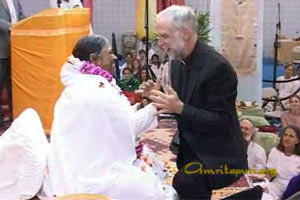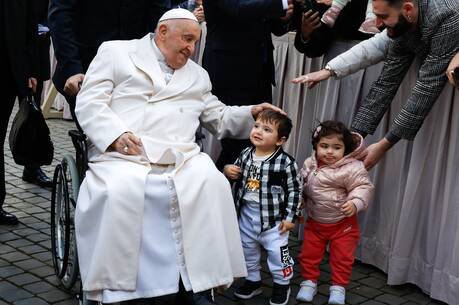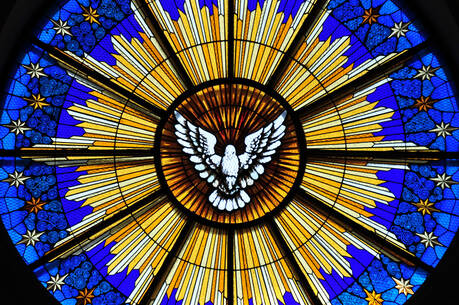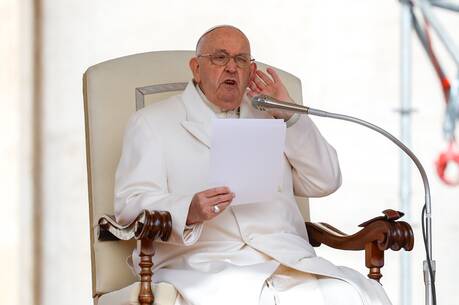Cambridge, MA. Blogging is fine, but face-to-face classroom conversation is better – for many reasons, but including the ability to point our attention back to the issue at hand at any given point. So it was the occasion for a great sigh – Sigh — that my last post, on my interreligious day at Harvard, accompanied (as a bonus for those who read to the end) by a link to my October 20 address as new Director of Harvard’s Center for the Study of World Religions, drew no direct comments. Rather, what intrigued or puzzled or annoyed a number of readers was that in the video, I was not wearing a Roman collar. One reader was kind enough to point out a long and thoughtful article on the topic, “Why a priest should wear his Roman collar,” by Msgr. Charles M. Mangan & Father Gerald E. Murray, Homiletic & Pastoral Review (June, 1995). This present blog — another 45-minute Saturday night special — is not the space for a full treatment of the topic, but just a few reflections that may be helpful. 
First, I did actually discuss with my colleagues how to dress for the event of my lecture; I considered clerics, but settled on that conservative gray suit. My hope was/is that I would be rather open and direct about my values and intentions, and my faith and view of the world would be evident in my words and communication with those listening. Just about everyone in the room would already know that I am a Catholic priest and Jesuit, say Mass regularly in a parish on the weekend, etc.
Second, I suppose all Jesuits know from early on that stories of the great Jesuit missionaries in Asia, who learned to fit perfectly into the local cultures, as it were incarnating in every possible and appropriate way. St Francis Xavier famously threw off his shabby cassock and dressed in yellow silk, to reach the Japanese nobles; Matteo Ricci dressed perfectly for the imperial court; Robert de Nobili adopted the saffron robe of an Indian ascetic, knowing that the black cassock would puzzle and repel. Or just re-read I Corinthians 9:22. And so too today: when on campus, dress for the occasion, fit in, that words and deeds be clearer, less encumbered, freer, direct and undistracted.
Third, I think how we dress is instrumental to our purpose, and should be assessed in terms of its usefulness and appropriateness to the occasion, the mission. I am quite happy to wear the Roman collar every Sunday to the parish. (True fact: When teaching in Nepal as a very young Jesuit, I wore a white cassock for two years in the classroom.) One kind reader pointed out that I did wear clerics when I welcomed the Hindu guru, Amrtanandamayi Amma, this past July; in that manifestly and symbolically religious setting, I knew that being visually “the priest” was a good point to be made. (I am greeting another Hindu visitor to Harvard this coming week, and will put my black suit on again.)
Fourth, I do appreciate the points made by Msgr Mangan and Fr Murray about the symbolic value of clerical garb, its clarity, and its sign value about availability to those in need. My generation in seminary — think back 30+ years — was taught that while we are priests 24/7, as they suggest, it is ok to be off-duty or, more to the point, to be inconspicuously present, available when contacts and conversations take place, but not necessarily announcing the fact of being a priest to one and all, all the time. (True confession: I am usually very busy when I travel, with lots to read and write, and would be unhappy to get drawn into conversations by people waiting for planes, etc. Such is life, when 24/7 is not long enough. Also: I am also a child of the 60s in that other sense: being informal is the way to be: shorts and a t-shirt are the ideal garb for almost all purposes when the weather allows. Uniforms of any sort are a problem. Etc. I am sure that some readers, younger included, are much more formal and observant of appearances. Such are the varying instincts we variously bring to our work and lives.) 
Such are indications of how one real priest really thinks in 2010. I fear that nothing I’ve just written will satisfy those who simply think that priests should be in clerical garb all the time. But at least, I hope to have indicated that we do think about these things; one of the small mysteries of the priesthood, after all, is how best to be, be seen, act as a priest — and here too, we hope for the grace to make the right decisions even when others might act differently in their own circumstances. But thanks to all who commented on this important point (and special thanks to those who listened to what I said in the lecture…)







For the slightly solipsistic, older commenters, it is all about their feelings, their comfort, their opinions...me, me, me
For the younger priest, it is about witnessing to something greater than himself (Christ and his Church) - and to which his sacrifices his desires and personal opinions.
I have great hope for the church not based on our parents - not the baby-boomers - but priests and young faithful coming into the Church.
www.courageouspriest.com/23-reasons-why-a-priest-should-wear-his-collar
What if you walked out the door and walked pass someone giving in to despair, someone looking for a priest? You would never know and you would miss the opportunity to help that person.
This bring up priesthood as "sacrifice". The below cited reason for wearing the collar is my favorite: ( from “Why a priest should wear his Roman collar,” by Msgr. Charles M. Mangan & Father Gerald E. Murray, Homiletic & Pastoral Review (June, 1995):
"The Roman collar serves as a "sign of contradiction" to a world lost in sin and rebellion against the Creator. The Roman collar makes a powerful statement: the priest as an alter Christus has accepted the Redeemer’s mandate to take the Gospel into the public square, regardless of personal cost. The Roman collar helps priests to avoid the on duty/off duty mentality of priestly service. The numbers 24 and 7 should be our special numbers: we are priests 24 hours a day, 7 days a week. We are priests, not men who engage in the "priest profession." On or off duty, we should be available to whomever God may send our way. The "lost sheep" do not make appointments".
I will never forget a recent encounter I had with a priest at a Catholic Church in Washington DC. I was working hard to find a home for a psychiatric patient who had become homeless. (I am a Social Worker). I got a clear details on his days off and when I could, and could not, leave a message for him.
If the priesthood is not a sacrifice, if it is not "suffering witness", as Fr. Hardon describes martrydom, then ithe priesthood is no different from any other pursuit. Might as well join the ranks of the laity. Oh, that priest? While joking about the Missionaries of Charity he said: "you know what the Missionaries of Charities stand for don't you? Mass Chaos". My response: " Well, Padre, at least they are doing it 24/7". It was the Missionaries of Charity who helped him...
As for Brett's claim that the younger clergy are more and attentive to their calling: sorry but I've seen too many young priest preening in front of each other to show off their finest frockery.
Why, then, do you think that a Roman collar makes a better priest outside of the liturgical settings, or a visible “soldier” of Christ?
Craif McKee mentions that 'L'habit ne fait pas le moine!' (The robe doesn't make the monk) (in Spanish: El hábito no hace al monje) is the truest saying on this issue and can be applied to many others who wear uniforms. The personal identity is reflected by our values and faith in action, and by a life that shows them, regardless of the robe, or collar or uniform we wear.
I don't see the "witness" argument very compelling these days...For me, the collar does not tell us how close to God a priest is.
So what if the clerical garb reminds them of the sexual abuse scandal? Not wearing the identifying clothes does nothing to correct that problem. It might be that if it were worn more, it would counteract the mental image people have developed because of the scandal. When I encounter a friendlier than usual man dressed as a priest I am much more comfortable returning the friendliness than I am when the man is dressed like everyone else, lest it be assumed that I am "available".
I do like priests wearing collars but would anyone like to explain this picture? It is not the only one that is of Fr. Ratzinger in a suit and tie.
www.americamagazine.org/blog/entry.cfm?blog_id=2&id...
A brief snippet: "When I first saw myself in the mirror, all I could think of was St. Isaac Jogues"...
That said, I do feel like we should be proud to be Catholics and welcome the debate/heat/intellectual combat/moments to witness etc. when we are recognized as such (either from our clothes, actions or words)
In any case, this was a nice follow up essay and I get where you are coming from (for the most part ;)
Also, here is an interesting take on this from a seminarian - the essay is entitled: "Collar as Yoke and Witness"
http://www.patheos.com/Resources/Additional-Resources/Collar-as-Yoke-and-Witness.html
''L'habit ne fait pas le moine!''
(The robe doesn't make the monk)